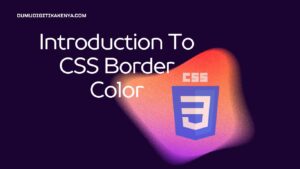Beginner’s Guide to JavaScript JSON
JavaScript Object Notation (JSON) is a lightweight data interchange format that is easy for humans to read and write, and easy for machines to parse and generate. JSON is widely used for data exchange between a server and a web application, and it’s the preferred format for representing structured data in JavaScript.
Let’s dive into each of these topics with detailed explanations and examples.

Table of Contents
1. What is JSON?
JSON stands for JavaScript Object Notation. It’s a lightweight data interchange format inspired by JavaScript object literal syntax, but it’s language-independent, meaning it can be used with many programming languages, not just JavaScript.
JSON consists of key-value pairs and arrays, making it an excellent choice for representing structured data such as user information, configuration settings, or API responses.
2. JSON Syntax
Objects
An object in JSON is an unordered collection of key-value pairs enclosed in curly braces {}. Each key is followed by a colon : and its corresponding value. Keys and values are separated by commas.
// Example of a JSON object
let person = {
"name": "John Doe",
"age": 30,
"isStudent": false
};Arrays
An array in JSON is an ordered collection of values enclosed in square brackets []. Values within an array can be of any data type, including strings, numbers, objects, or even other arrays.
// Example of a JSON array
let colors = ["red", "green", "blue"];3. Parsing JSON
In JavaScript, you can parse a JSON string into a JavaScript object using the JSON.parse() method. This method takes a JSON string as input and returns the corresponding JavaScript object.
// JSON string
let jsonString = '{"name": "Alice", "age": 25, "isStudent": true}';
// Parsing JSON string into JavaScript object
let obj = JSON.parse(jsonString);
console.log(obj.name); // Output: Alice
console.log(obj.age); // Output: 25
console.log(obj.isStudent); // Output: true4. Stringifying JSON
Conversely, you can convert a JavaScript object into a JSON string using the JSON.stringify() method. This method takes a JavaScript object as input and returns the corresponding JSON string.
// JavaScript object
let book = {
title: "The Great Gatsby",
author: "F. Scott Fitzgerald",
year: 1925
};
// Converting JavaScript object to JSON string
let jsonString = JSON.stringify(book);
console.log(jsonString);
// Output: {"title":"The Great Gatsby","author":"F. Scott Fitzgerald","year":1925}Conclusion
JSON is a simple yet powerful data format widely used in web development. Understanding how to work with JSON in JavaScript is essential for building modern web applications that communicate with servers and consume APIs. With the knowledge gained from this tutorial, you should feel confident in using JSON to represent and exchange data in your JavaScript projects.




